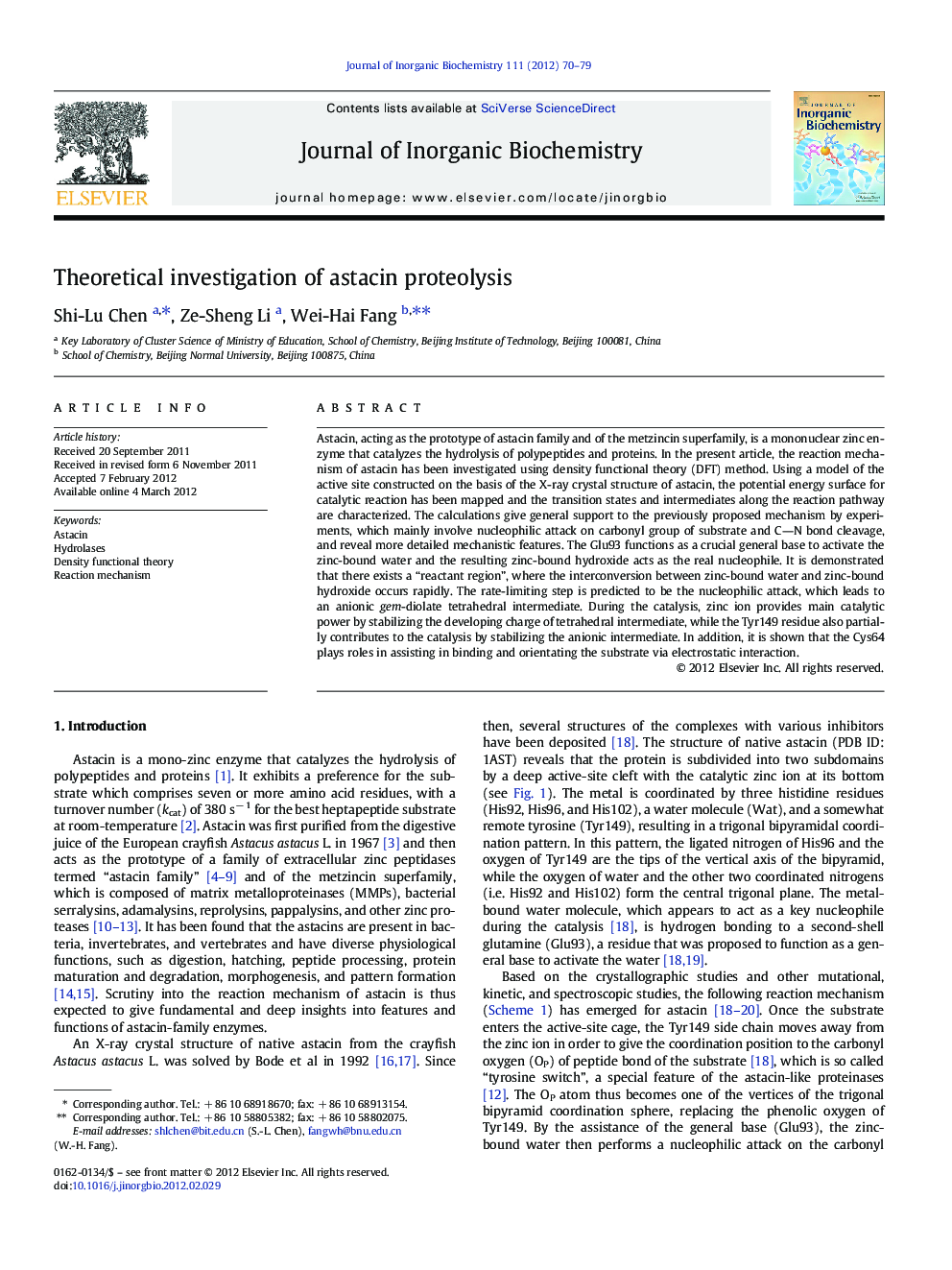| کد مقاله | کد نشریه | سال انتشار | مقاله انگلیسی | نسخه تمام متن |
|---|---|---|---|---|
| 1317752 | 1499476 | 2012 | 10 صفحه PDF | دانلود رایگان |

Astacin, acting as the prototype of astacin family and of the metzincin superfamily, is a mononuclear zinc enzyme that catalyzes the hydrolysis of polypeptides and proteins. In the present article, the reaction mechanism of astacin has been investigated using density functional theory (DFT) method. Using a model of the active site constructed on the basis of the X-ray crystal structure of astacin, the potential energy surface for catalytic reaction has been mapped and the transition states and intermediates along the reaction pathway are characterized. The calculations give general support to the previously proposed mechanism by experiments, which mainly involve nucleophilic attack on carbonyl group of substrate and C―N bond cleavage, and reveal more detailed mechanistic features. The Glu93 functions as a crucial general base to activate the zinc-bound water and the resulting zinc-bound hydroxide acts as the real nucleophile. It is demonstrated that there exists a “reactant region”, where the interconversion between zinc-bound water and zinc-bound hydroxide occurs rapidly. The rate-limiting step is predicted to be the nucleophilic attack, which leads to an anionic gem-diolate tetrahedral intermediate. During the catalysis, zinc ion provides main catalytic power by stabilizing the developing charge of tetrahedral intermediate, while the Tyr149 residue also partially contributes to the catalysis by stabilizing the anionic intermediate. In addition, it is shown that the Cys64 plays roles in assisting in binding and orientating the substrate via electrostatic interaction.
The peptide hydrolysis catalyzed by astacin has been investigated using density functional theory with the B3LYP functional. The calculations give general support to the previously proposed mechanism which mainly involves nucleophilic attack on carbonyl group of substrate and C―N bond cleavage, and reveal more detailed mechanistic features.Figure optionsDownload as PowerPoint slideHighlights
► The rate-limiting step is nucleophilic attack.
► Proton transfer to nitrogen should occur prior to C―N bond cleavage.
► Zinc ion provides main catalytic power by stabilizing the developing charge.
► Tyr149 partially contributes to the catalysis by stabilizing anionic intermediate.
► Cys64 plays roles in binding and orientating substrate via electrostatic interaction.
Journal: Journal of Inorganic Biochemistry - Volume 111, June 2012, Pages 70–79